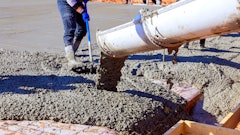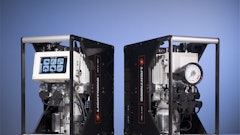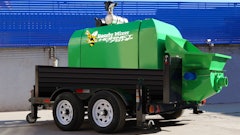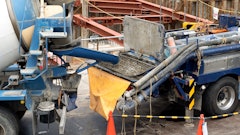
The most prevalent pumps within a construction site are centrifugal water pumps, used for moving water and other light liquid substances, and positive displacement pumps, used for thicker fluids, such as oils, mud, slurries, and more. These pumps are critical assets at a construction site as they are responsible for the removal of water and mud from excavated areas. In addition to transporting fluids, these pumps also play a role in other construction processes, such as cement injection.
Unexpected failure of these pumps can impact construction work, resulting in delays and cost overruns. In addition, if a pump fails to remove water and hazardous materials, this will impact worksite safety, as well as the environment.
Due to the critical nature of these pumps, many organizations perform frequent inspections and preventative maintenance. However, these practices are not always cost-effective or efficient. Oftentimes components are replaced that may still be in a useable state. Also, the maintenance actions necessary to replace those components require personnel that could potentially be directed to more urgent tasks.
Employing a condition-based maintenance (CBM) strategy can alleviate some of these issues. While it does provide these benefits, CBM only yields the current state of the asset being monitored, not an early detection or warning of impending issues. Therefore, CBM does not reduce unplanned downtime and has minimal impact.
The goal of reducing unplanned downtime has sparked significant investment and interest in an alternative to CBM: predictive maintenance. This predictive approach is similar in that it relies on current signals from an asset, derived from sensors and other sources; however, it also leverages past data, domain expertise, and machine learning/AI to create a health model that be used to identify potential issues before they occur. These early signs of failure enable personnel to perform maintenance only at the exact time it is needed.
Case Study
A worldwide oil and gas contractor specializing in automated drilling equipment and rig components wanted to apply a health monitoring approach to its mud pumps in the field. The contractor was experiencing mud pump leak events, which are not only dangerous to workers, but also environmentally hazardous. Their hope was to reduce these unexpected leaks and prevent the unplanned downtime caused by their failure and maintenance.
By working with a predictive analytics company, this client sought to develop and validate a health monitoring solution by inducing faults on their test rig.

The Predictronics PDX platform is an end-to-end predictive analytics solution that monitors critical assets by collecting and analyzing big data, with the goal of reducing unplanned downtime, increasing productivity and improving product quality.
Image supplied by Predictronics
A Predictive Maintenance Solution
A year’s worth of historical data, as well as sensor data collected from the piston, suction and discharge mechanisms on two pumps in the field, were utilized in the development of this solution. After determining vibration trends in the frequency and time-frequency domain, key features crucial to developing the health models were extracted from the data These models then helped identify the contributing factors which led to pump seal failure.
The health monitoring solution pinpointed pump leaks events before they occurred through advanced signal processing and vibration-based pattern recognition. This allows the company to take action through predictive maintenance. By diagnosing failure days in advance, this solution improved productivity and reduced hazards, saving the contractor money and resources and preventing disastrous environmental and worker safety issues.
Considerations when deploying a pump predictive monitoring solution include:
- Performing criticality analysis helps to prioritize the pumps that, when they fail, create the biggest headache for the company in terms of delays in production due to downtime and worksite pitfalls that affect personnel. Establishing which pumps are vital to efficiency at the offset and monitoring those particular assets ensures a solution that will deliver the uppermost value and return on investment (ROI) for the company.
- To develop the most accurate solution with the greatest value, a company and their predictive solution provider should work together to ascertain key failure modes, relevant maintenance records, and any previously collected data available from the pump’s controller.
- Not only should sensor placement be considered to help improve upon the data collected, but it may be decided that additional sensors are needed to gather the necessary data for this solution.
Originally published on IronPros.com, September 2023.
https://ironpros.com/en-us/a/da08fed4f0be0964153bd8241e7e6588/whys-and-hows-of-dewatering-and-concrete-pump-predictive-maintenance



















